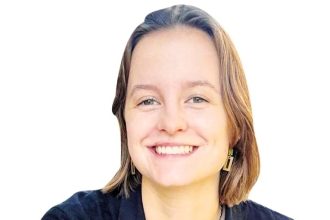A giant hairball weighing a whopping 4lbs has been removed from a teen’s stomach.
She developed trichotillomania, also known as hair-pulling disorder or compulsive hair pulling, a disorder characterised by a long-term urge that results in the pulling out of one’s own hair.
The condition can also involve hair chewing, which is how the mangled mass ended up in the young woman’s stomach, as reported by Need To know.
At the time of the hairball’s discovery, the teen had already completed successful psychiatric treatment.
But following a prolonged period of weight loss and unexplained stomach pain, the hairball was discovered.
It resulted in an additional condition known as superior mesenteric artery syndrome, which causes compression in the small intestine.
The report explained: “A 19-year-old female patient presented to the hospital with a history of abdominal pain localised around and below the umbilicus for the past six weeks.

The hair mass after extraction. (Jam Press/Science Direct)
“The pain persisted for one week and was associated with recurrent vomiting after food intake for two months, along with mild anorexia at the onset of the pain.
“There were no changes in bowel habits, and the patient reported no fever.
“In the patient’s history, she reported significant weight loss over the past year.”
A subsequent physical examination identified the mass, which was revealed in greater detail on an ultrasound and later a CT scan.
As the hairball was so big, surgery was elected as the best course of action, and following a 10cm incision in the stomach, the 4lbs mass was removed.

Lembert suture pattern after surgery. (Jam Press/Science Direct)
The female was given IV fluids following the procedure and soon regained her appetite.
The report concluded: “No psychological interventions were initiated as the patient and her family confirmed that she had successfully recovered from trichotillomania long before the admission.
“As for the superior mesenteric artery syndrome, it developed mostly due to the pressure of the large hair mass, so it was left to heal conservatively after the surgery.
“The follow-ups for three months were normal with no symptoms of either of the two syndromes and the patient started to gain weight.”










